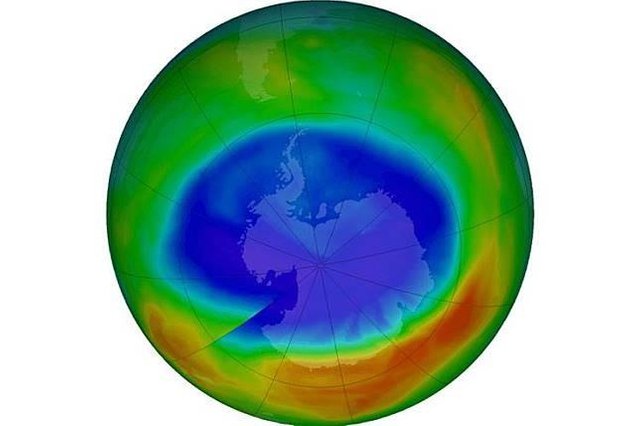The Good News of the Science World, The Most Smallest Ozone Hole Since 1988
The end of 2017 brings good news about our environmental conditions. Holes in the ozone layer are getting smaller, even the smallest since 1988.
Measurements in September show that holes in the ozone layer reach 19.7 million square kilometers, equivalent to two and a half times the United States. That number is 3.4 million square kilometers smaller when compared to 2016.
This shrinkage occurs due to warmer weather in the stratosphere since last year. Conditions that help fend off chemicals such as chlorine and bromine that gnaw the ozone layer.
"The weather conditions in Antarctica are a little weaker and cause warmer temperatures, which slows the ozone loss," said Paul A Newman, Chief Scientist at NASA's Goddard Space Flight Center in Maryland.
As reported by the Washington Post November 3, 2017, when traced backwards, efforts to reduce the ozone hole have occurred since the mid-1980s.
In the 1970s, scientists for the first time realized that chlorofluorocarbons (CFCs) destroyed a thin layer of ozone over Antarctica.
In fact, ozone which is a colorless gas protects the earth from harmful ultraviolet radiation. This radiation can cause various problems, ranging from skin cancer, cataracts, to interfere with plant growth.
Encouraged by the find, 24 nations united and signed the Montreal Protocol. The international agreement calls for the elimination of the use of ozone-depleting chemicals.
"This is very valuable, because initially this is just a scientific endeavor, and then we can convince the public that this is a problem - this is what will happen if we do not face it," says chemist Mario Molina, who has an important role in the discovery of the ozone hole and was awarded Nobel Prize for his research in 1995.
By 2014, scientists at the United Nations credited the successful recovery of the ozone layer against the gradual removal of CFCs from refrigerators, air conditioners and aerosol cans that occurred in the 1980s.
Newman said, the CFC is difficult to remove from the earth. The chemicals will still be in the atmosphere for about 100 years into the future. At least, the ozone layer will not return as it was in the 1980s, until 2070.
Today, CFCs may not be a threat to ozone recovery. However, researchers have identified a new threat, namely dichloromethane, which is an industrial chemical.
According to research published in the journal Nature Communications, the presence of dichloromethane has doubled over the last ten years, and if it continues, the ozone layer chance of returning to normal will be delayed by up to 30 years.
Follow me @cekblack
